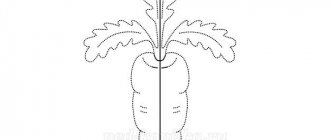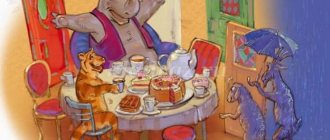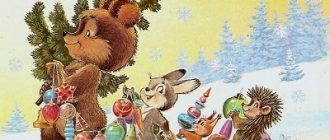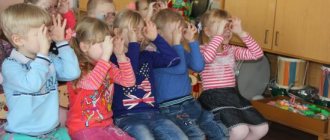When we were given the “Geography” set from , my daughter and I began studying our Earth. At first, we looked at the geographical map quite enthusiastically, moved around it in our book-ships, repeating the names of the continents and oceans. I must say that Taisiya liked her classes, but the further we moved, the clearer it became to me that simply memorizing the names of the continents and facts about them (even in a playful way) would lead us to the wrong place. Still, the true task of geography is to form an idea of the world around us, and not to memorize a map. And so that the continents did not remain just mysterious spots with meaningless names, it was necessary to change something in our games.
After experimenting with classes, I came to the conclusion that the most interesting and useful way to study our world is to organize mini-trips to different corners of it. Therefore, now we study geography this way: when we go on a trip to another point on the globe, we, first of all, find it on the map and globe, and then we immerse ourselves in the atmosphere of this place. We play active and role-playing games on this topic, draw, conduct experiments, solve riddles, watch pictures and cartoons that help us get to know the environment we are studying better. Whenever possible, I try to make a themed sensory box so that we can also touch what we are talking about.
The first trip that I decided to talk about as part of the new column “Entertaining Geography” is a trip to the North Pole. Perhaps, at the moment, this expedition was our most emotionally intense. For a whole week, the whole family played Eskimos, jumped on ice floes, painted the sea with seals and walruses, looked at the northern lights (on YouTube, of course), sitting in a dark room. And a lot of other interesting things fit into this thematic lesson, which lasted for 2.5 weeks; you can read about everything in detail in this article.
The games proposed in the article are well suited for children from 3 to 7 years old - for younger and older preschoolers. You should not try to play all the game options at once; it is better to stretch them out over 1-3 weeks, while constantly alternating active games with those that require perseverance.
Finding the Arctic on the map
First of all, we need to understand where we are going. Therefore, we take out a geographical map and look where our destination is. The map can be hung on the wall so that it is always visible. But we prefer to spread the map on the floor and move their favorite toys on it on their ship books.
Reaching the North Pole on the map, we simultaneously name the oceans through which we sail and other places that are already familiar to us.
It will be great if you find the Arctic not only on the map, but also on the globe. I discovered that after my daughter had gotten her bearings a little on the map and could show all the continents and the approximate location of our city, she was completely lost on the globe and refused to recognize seemingly familiar continents on it. Therefore, it is useful to study the globe in parallel with the map, in addition, this will form in the child the idea of the Earth as a ball.
Earth's magnetosphere
Scheme of the Earth's magnetosphere
The Earth's magnetosphere is formed under the influence of the solar wind and the Earth's magnetic field. It forms an obstacle to the solar wind, distracting it, at an average distance of about 70,000 km (11 Earth radii), and forms a bow shock at a distance of 12,000 km to 15,000 km (1.9 to 2.4 radii). The width of the Earth's magnetosphere is typically 190,000 km (30 radii), and on the night side a long magnetospheric plume of elongated field lines extends over enormous distances (> 200 Earth radii).
The plasma flux in the magnetosphere increases with increasing density and turbulence in the solar wind flow.
In addition to colliding perpendicularly with the Earth's magnetic field, some flows of magnetospheric plasma move up and down along the Earth's magnetic field lines and lose energy in the auroral zones of the atmosphere, which is what produces the northern lights. Magnetospheric electrons accelerate and collide with atmospheric gases causing atmospheric glow.
Presentation on the topic “Arctic” for children
To gain basic knowledge about the Arctic, it would probably be best to watch a presentation with your child. It briefly tells the most interesting facts about the Arctic: what nature is like here, what animals live, what peoples live and what their houses look like; the presentation will give the first idea of the polar night and the northern lights. You can DOWNLOAD our presentation HERE .
A didactic game with cards will help you consolidate the knowledge gained from the presentation; you can read more about it and download the materials below.
In addition to the presentation, you can watch various videos about the Arctic on YouTube. For example, Taisiya was very impressed by the video about the northern lights. It seems that we have reviewed all possible videos about this amazing phenomenon (while always turning off the lights in order to create polar night conditions). You need to watch a video about the aurora, if only because photographs do not convey the full picture.
What you need to know about the natural phenomenon
The Northern (polar) lights are one of the most interesting and mysterious natural phenomena. Only recently have scientists managed to find out how it appears. Multicolored auroras occur primarily in the upper atmosphere due to the interaction of charged particles with the Earth's magnetic field.
A similar natural phenomenon can be admired at night in high latitudes of both hemispheres. It is classified according to several criteria.
- Depending on the shape, ribbon-like, diffuse, or ray-like glow is distinguished.
- Depending on the intensity, the “lights of the North” can vary from barely visible to bright, colorful.
- The auroras can be divided by color: green, red, red-pink. Most often it is the green glow that can be observed. Less common are purple or blue lights. White light is extremely rare.
During auroras, characteristic clicks, pops and other sounds are often heard. They are of natural origin.
Sensory box “North Pole”
It’s one thing to look at pictures and listen to what you tell about the North Pole, and quite another thing to touch it with your hands. For this purpose, a sensory box is ideally suited, which, in addition to everything, also provides huge scope for role-playing games.
A little about what to make a sensory box from . With the snow in our Arctic, I didn’t get too fancy and used one of the simplest options - rice. I put some cotton balls on top, it turned out something like snowdrifts. Pieces of refined sugar can also become ice blocks.
What else can you make snow from? Semolina, coarse salt, cotton wool, real snow from the street, crumbled polystyrene foam and even shaving foam work well.
To make the Arctic Ocean, I added a little blue gouache and gelatin to the water, it turned out to be blue jelly with fish. After the jelly has hardened, you can put cotton pads on top of it - these are ice floes. Of course, to preserve the jelly after the game, such an ocean must be put in the refrigerator, but this has a big plus - during the game the ocean is always cold, which fully corresponds to its Arctic nature
The ocean can also be made from hydrogel or ordinary water. But the option with water is perhaps the most inconvenient; the water will splash all the time, moistening the snow and the entire surrounding area.
Various themed kits like this one are perfect to create an atmosphere.
In our games, the polar bear hunted for fish, attacked a seal, set up a den for himself,
Polar scientists who arrived on an icebreaker tried to get acquainted with the local Eskimos and photograph the animals,
the Chukchi rode a reindeer and tried to make friends with the Eskimos, etc.
sergey_barkov.jpg
Photo: Sergey Barkov
Officially
The Russian Association of Tour Operators reported an increase in demand for winter tours to Russia. The main volume of tourist traffic in Russia in winter comes from countries in Asia and Europe. According to experts, in the winter season Russia will receive mainly tourists from China (about 80 thousand), South Korea (about 20 thousand), Israel (about 15 thousand), Germany (15 thousand), France (about 10 thousand), from Italy, Thailand, Turkey - 6-8 thousand people each in January - February.
Foreign tourists choose Moscow, St. Petersburg and the Trans-Siberian Railway. And if some of them go to plunge into the New Year's fairy tale in the capital, then the rest are attracted by the northern lights. On the territory of our country, this phenomenon can be observed in almost the entire North. Every year the number of viewers of the natural light show grows by about 20%. Most of these tours are sold to Murmansk and Karelia.
The project “Travel with the Russian Geographical Society” offers three seasonal tours in which you can see the northern lights: to the Arkhangelsk region, Chukotka and Karelia.
Outdoor games
Outdoor games, as expected, are the most interesting and favorite part of children's activities. If viewing presentations and reading books about the Arctic are not alternated with active games, then it will simply become boring, and not a single child will want to do it. Game options:
- We jump on ice floes . We lay out sheets of white paper on the floor, jump on them, trying not to step into the cold ocean
- We ride reindeer. One of the participants becomes a deer, and the other becomes a Chukchi. We harness the deer, for example, using a belt, and ride it around the room. Similarly, you can play an Eskimo riding dogs.
- Game "Polar Owl". As you know, the polar owl is a fast and ferocious predator. One of the players is assigned as an owl, his task is to run, flapping his wings, and catch his prey. The rest must run or hide from the owl. In essence, these are ordinary catch-up games, so you can play even together.
- Game "Ice". It is better to play this game with at least three people. One of the players is designated Frost, he catches up, and the rest run away. If Frost touches someone, he freezes and freezes. However, other players who have not yet been frozen can unfreeze the “icies” by touching them. The game ends when Frost freezes all players.
- Exercise "Seals". We lie on our stomach, arms along the body. Bend your back back without lifting your legs off the floor. We repeat several times.
- Game "Eskimos". We turn the children's tent into an igloo (I just threw a white tablecloth over the tent), put on our own hats, and if desired, something else warm, and play out the life of the Eskimos at the North Pole: how they hunt, fish, ride reindeer, and freeze and warm up, etc.
- Finger gymnastics
Who lives in the North? Who eats there and who drinks there? (alternately clap our hands and hit each other with our fists)
The animals are unusual, accustomed to the cold. (we hug ourselves by the shoulders, show how frozen we are)
Here is an arctic fox looking out of a mink (we make a ring from the thumb and index finger, look into the resulting “mink”)
The polar bear walks importantly (“walking” with the index and middle fingers)
Well, the walrus is like a captain,
Conquers the ocean (we fold our palms into a “boat” and “swim” forward in waves)
Proud reindeer (arms crossed above head)
He carries cargo all day long. (one hand “walks” with the thumb and forefinger, the other lies on it, clenched into a fist)
Northern Lights: what is it and how does it happen?
Let's figure out what these northern lights are that surprise and frighten people living near the north and south poles? Mikhail Lomonosov guessed the riddle of the mysterious lights, deciding that electricity plays a role here. To confirm his theory, the scientist passed a current through flasks filled with various gases. After the experiment, the flasks shone with unique colors.
Simply put, charged particles emitted by our Sun (solar wind) cause the Earth's air to shimmer with multi-colored lights.
The earth is a magnet for particles, which forms magnetic fields due to currents generated during the rotation of the core, which is based on iron. With the help of magnetic attraction, our planet “catches” the passing solar wind and directs it to where the magnetic poles are located. There, solar particles are instantly attracted to them, and from the collision of the solar wind with the atmosphere, energy appears, converted into light, which forms the northern lights.
- The excited atoms calm down and begin to emit a light photophone;
- If nitrogen (N) collides with solar particles and loses electrons, its molecules turn blue and violet;
- If the electron does not disappear anywhere, then red rays appear;
- When the solar wind interacts with oxygen (O), the electron does not disappear, but begins to release rays of green and red colors.
Experiments and other games on the theme “North Pole”
- Snow melting
If you start exploring the North Pole in winter, be sure to take some snow from the street with you during your walk. At home, put the snow in a light or transparent container and observe what the snow turns into in the warmth. To speed up the process, you can place a bowl of snow near the radiator. When the snow has finally melted, draw your child’s attention to the fact that the resulting water is very dirty (for comparison, we also poured clean tap water into another dish), and this explains why you can’t eat snow!
- frozen ground
During our trip to the North Pole, I explained to my daughter that due to the long and cold winter, the ground here freezes very much, and therefore almost nothing grows in the Arctic. To better understand what “the ground freezes” means, we did the following experiment.
I prepared 2 cups of soil in advance and put one of them in the freezer. After the soil froze, together with Taisiya we tried to pierce the ground in the cups with a stick, but it turned out that it was impossible to stick a stick into the frozen ground. Then we began to pour water into cups, and the newly frozen ground turned out to be impregnable - the water remained on the surface of the earth. Thus, we saw with our own eyes that it is difficult for plants to survive in frozen ground.
- We save frozen animals
Although this game does not meet the requirements of reality, it is still quite interesting. And so, the legend is that animals from Africa somehow got to the North Pole, where they froze in one of the glaciers. And we urgently need to save them, defrost the ice in any way available to us (water with warm water, sprinkle with salt), and then send the animals back to Africa. I already wrote about this game earlier in an article about the New Year’s Advent Calendar.
- Putting the puzzle together
You can DOWNLOAD our Arctic puzzle HERE .
- Didactic game on the theme “Arctic”
This didactic game helps to consolidate the knowledge gained while watching the presentation. To play you will need cards with animals and other characteristic Arctic phenomena (Our cards can be DOWNLOADED HERE ).
First, all the cards are placed face down in a deck. During the game, the presenter takes out one card from the deck and shows it to the players. The players' task is to name what is depicted on it. The one who guesses first takes the card for himself. Naturally, the player with the most cards wins.
Solar wind and magnetosphere
The Earth is constantly immersed in the solar wind, a tenuous stream of hot plasma (a gas of free electrons and positive ions) emitted by the Sun in all directions, which is generated by the two million degrees of heat of the Solar Corona.
The solar wind typically reaches the Earth at a speed of about 400 km/s, a density of about 5 ions/cm3 and a magnetic field strength of 2-5 nT (Earth's magnetic field strength is measured in Tesla and at the Earth's surface it is typically 30,000- 50,000 nT). During magnetic storms, solar plasma flows can be several times faster and the interplanetary magnetic field (IMF) can be much stronger.
The interplanetary magnetic field is formed on the Sun, in the region of sunspots, and the solar wind extends into space along its field lines.
Riddles about the Arctic for children
During breaks between games, you can solve several riddles about Arctic animals.
Sitting on a block of ice,
I catch fish for breakfast.
I am known as snow-white
And I live in the North.
And the taiga brown brother
I'm happy with honey and raspberries. (polar bear)
***
The lazy one has a bungler
Paws turned into flippers.
Sleeps on an ice floe all day
Fat little... (seal)
***
A strong animal, lives in a cold region,
Fights enemies with huge fangs,
He is not afraid of frost, he is smooth, thick-skinned,
The clumsy one loves to sleep on the ice floe... (walrus)
***
What kind of predator is this?
With blue and white fur?
The tail is fluffy, the fur is thick,
Goes to burrows to stay.
Birds, eggs, rodents -
They are always delicious for him.
Looks a little like a fox
Also a dog breed. (Arctic fox)
***
Like a royal crown
He wears his horns.
Eats lichen and green moss.
Loves snowy meadows. (deer)
alla_fedina.jpg
Photo: Alla Fedina
The first person to note this phenomenon from a medical point of view was the British doctor Watson. He participated in several polar expeditions at the very beginning of the twentieth century. The scientist described people falling into a strange state, who began to make rhythmic, consistent movements and moved towards the north. Any attempts to restrain them led to active resistance. Watson called this condition expeditionary or polar rabies.
Earlier, the famous polar explorer Amundsen encountered this strange phenomenon. He was the navigator of the Belzhik ship, which was wintering off the coast of Antarctica. Several members of the expedition “heard” the call of the North Star. One of them even escaped from the ship into the snowy expanses, and the other tried to kill Amundsen with an ax.
Doctors who took part in polar expeditions discovered a pattern: almost all cases of polar rabies coincided with the activity of the aurora. The most terrible ones coincided with flashes of red color. The number of such attacks of expeditionary rabies increased significantly in years with recorded peaks of solar activity, when the brightest auroras occurred.
Crafts on the theme “Arctic” for children
When I was preparing the sensory box, I deliberately did not put Eskimos in it, because I thought that it would be interesting for my daughter to make the inhabitants of the Far North and their homes herself. The crafts really turned out to be quite unusual.
Eskimo . I thought that making an Eskimo from plasticine from scratch would be quite a labor-intensive task for a 3-year-old child, so we made our Eskimos by dressing Lego Duplo men in plasticine clothes. Both the fur coat and the hat are plasticine rectangles rolled out and stretched with our fingers, in which we wrapped our little men. On the left in the photo is an Eskimo dressed up as his daughter, on the right is mine.
An igloo made from a paper cup. Here you need to make a doorway in a paper cup in advance and cut small “bricks” from cotton pads. And only then, together with the child, cover the glass with cotton “bricks”.
Igloo made from refined sugar . I already wrote about this option for building an igloo earlier in the article “New Year’s Advent Calendar.” True, for kids, building an igloo from refined sugar, tapering at the top, can be a difficult task, so you can build a lightweight version, as in the photo.
Of course, an igloo made from refined sugar is not as durable as one made from a glass, but it is still sweet. Taisiya, naturally, could not resist eating sugar during construction
Drawing the Northern Lights . We painted the northern lights with regular gouache. I think it will also look great if you paint with watercolor water or, for example, soap bubbles. You can glue sparkles (glitter) on top of the drawing.
Drawing the ocean with ice . When the question arises of how to draw the Arctic Ocean, drawing with ice comes naturally. After all, in this case you can also feel the freezing cold
Water for ice can be tinted with gouache or liquid watercolor.
You can glue cotton wool, cotton pads or pieces of napkins around the ocean as snow, and make ice floes from foil. You can also glue pre-painted and cut out Arctic inhabitants.
Well, a couple more options for “Arctic” crafts:
Polar bear made from cotton pads and napkins
Three circle walrus . The circles can be painted paper plates.
Various cotton wool applications look original and are quite simple to make. For example, you can paste cotton wool over images of a polar bear or an igloo (downloaded from the Internet).
If a child likes to color, then you can offer him coloring books with silhouettes of Arctic animals; they can also be easily downloaded on the Internet. You can also color with plasticine, smearing it over the picture.
518892.jpg
Photo: Alexander Merkushev
“In the Murmansk region, official statistics on the number of tourists are very different from the real figures,” says Vladimir Onatsky. – Hotels for this season are booked six months to a year in advance. The real numbers are five times higher. Many come as savages and rent housing from local residents. They travel to popular places on their own.” It is also impossible to track through travel companies. The number of illegal guides has increased over the past two or three years. Even taxi drivers promise to show you the best northern lights. True, they do not guarantee results. Honest Arctic guides take their guests until they manage to catch the fiery fox by the tail.
According to Vladimir, he works mainly with Russians. Many of them come again - with their family, colleagues, friends. He believes it is extremely important when customers are satisfied and a pleasant impression is left about the region. And recently on the Kola Peninsula, the tourism business followed demand: they began to build glass igloos - both the sky is visible and it is warm.





